 With a high-end feature set offering auto, scene, aperture and shutter priority modes plus full manual exposure controls, Panasonic’s beautifully sculpted 8 megapixel LX1 is clearly aimed at the discerning photographer who knows their ISO from their f-stop.
With a high-end feature set offering auto, scene, aperture and shutter priority modes plus full manual exposure controls, Panasonic’s beautifully sculpted 8 megapixel LX1 is clearly aimed at the discerning photographer who knows their ISO from their f-stop.
The camera – available in silver or black – is the world’s first compact camera to offer a panoramic 16:9 ratio CCD sensor -perfect for displaying on widescreen TVs – as well as 4:3 and 3:2 shooting ratios.
Despite its traditional appearance, the LX1 provides a class-leading level of control for digital photographers who like to wear the trousers when it comes to exposure (if you, err, get what we mean).
 On most compact digcams, exposure adjustments are invariably achieved by fiddly excursions through endless sub-menus, but the LX1’s design affords fast, direct access to a host of vital functions like ISO rating, shutter speed, aperture and file size/quality – essential for those looking to capture the ‘decisive moment’.
On most compact digcams, exposure adjustments are invariably achieved by fiddly excursions through endless sub-menus, but the LX1’s design affords fast, direct access to a host of vital functions like ISO rating, shutter speed, aperture and file size/quality – essential for those looking to capture the ‘decisive moment’.
Aspect ratios
Most digicams use sensors with a 4:3 aspect ratio (similar to a standard TV), but the LX1 lets you choose between three different picture shapes; 16:9, 3:2 (print size) and 4:3.
 Although some cameras mimic a 16:9 shooting ratio by cropping off the top and bottom of the picture, the LX1 has a true 16:9 sensor, with users able to switch formats via a handy switch on the lens barrel (no sub-menu burrowing needed).
Although some cameras mimic a 16:9 shooting ratio by cropping off the top and bottom of the picture, the LX1 has a true 16:9 sensor, with users able to switch formats via a handy switch on the lens barrel (no sub-menu burrowing needed).
We grew to love the vast, cinema-like sweep of pictures recorded in 16:9 – so much so that photos taken on other digicams looked positively cramped in comparison.
Images came out pin-sharp courtesy of the Leica branded 28-112mm (equiv.), offering a bright F2.8 at the wideangle setting, dropping down to a less impressive F4.9 at the telephoto end.
It’s worth noting that you lose the extreme wideangle when you switch to the more conventional 4:3 or 3:2 modes, which offer a 34-136mm zoom range.
At the back of the camera, there’s a large, bright 207,000 pixel, 2.5-inch LCD screen with a near lag-free refresh rate. We had no problems seeing what was going on in all but the brightest of sunlight, but an optical viewfinder would have been a handy addition.
 Camera controls
Camera controls
The main controls to the right of the LCD were simple and easy to use, and we had no problems navigating the menus using the four-way controller.
A smaller multi-directional ‘joystick’ lets you adjust aperture and shutter speeds in the relevant modes, as well as set manual focus.
Pressing the joystick brings up a convenient ‘quick menu’ for changing common shooting options like ISO, white balance etc – a great example of the photographer-led usability that sets this camera apart from the pack.
Panasonic did blot their copybook slightly however, with a few poor translations in their sub-menus – not what you expect from a top of the range camera.
 Photographic modes
Photographic modes
Along with the enthusiast-pleasing manual, aperture and shutter priority exposure modes, there’s a host of auto scene modes covering just about every photographic eventuality we can think of. These include portrait, sports, food, scenery, night scenery, self-portrait, night portrait and a rather curious ‘baby’ option.
In use, we found the LX1 to be very responsive, with impressively fast focusing, shutter lag and shot-to-shot times.
Exposure was spot on more or less every time, with the camera delivering stunning resolution, razor-sharp images stuffed full of detail.
The control layout proved intuitive and a pleasure to use, and we’d go as far as to say that this is the best handling compact digital camera we’ve ever come across – not only does the LX1 look great, it feels great to use too!
In fact, we found ourselves taking more pictures with the LX1 than any other camera on the desk, with its extensive range of features encouraging creativity and experimentation.
Flawed gem
The Lumix was on track to being our perfect camera, until we found a veritable swarm of bluebottles appearing in the ointment when the sun went down.
We’re talking high ISO image noise. Tons of it.
Even at 80 and 100 ISO there’s more noise than many of its rivals, and as the ISO ratings rose, the heartache increased.
At 200 ISO, you’ll be reaching for noise reduction software like Noise Ninja and Neat Image. At 400 ISO you’ll be wondering what possessed you to spend so much on the camera.
 Of course, the capable image stabilisation goes some way to compensate for these serious shortcomings, allowing handheld longer exposures at low ISO ratings, but that’s going to be a dead loss if you’re trying to freeze action in low light.
Of course, the capable image stabilisation goes some way to compensate for these serious shortcomings, allowing handheld longer exposures at low ISO ratings, but that’s going to be a dead loss if you’re trying to freeze action in low light.
It’s a real shame that Panasonic has kitted this marvellous camera out with such a noisy sensor, although it needn’t be a deal breaker.
If you’re only looking to knock out small prints, then the high ISO noise won’t be so much of an issue, and if you’re prepared to put the work into processing RAW files, things improve radically.
Obviously, if your interest lies in landscapes, cityscapes, studio shots and other scenarios where low ISO ratings and tripods are de facto, image noise becomes a non issue.
 Conclusion
Conclusion
The Lumix LX1 is in many ways the perfect digital compact, offering a feast of features for demanding prosumers with enough automated modes to please the point’n’shoot brigade.
Offering unparalleled handling, lovely Leica-like looks (try saying that after a few beers), superb optics, fast handling and RAW capability, the camera is capable of producing astonishingly good results.
The only thing stopping us awarding the LX1 a frothing-at-the-mouth ten out of ten rating is its poor high ISO handling – but if you’re prepared to work within the camera’s limitations, you can expect to be rewarded with a camera capable of the very, very highest results.
RATING: 86%
Pros: Beautiful finish, fantastic handling, manual controls, pin-sharp lens, image stabilisation.
Cons: Unacceptable noise over 100ISO, clip on lens cover, average battery life.
Lumic LX1
Street price: UK: £350 (~$616 ~e509)
SPECS:
Sensor: 1/1.65″ CCD, 8.61 megapixels (16:9 aspect ratio)
Image Quality: RAW/TIFF/Fine/Standard
Movie clips: Quicktime (.mov) M-JPEG with audio – 640 x 480 (10/30 fps, 320 x 240 (10/30 fps), 848 x 480 (10/30 fps) (16:9)
Lens: Leica DC Vario-Elmarit, 28 – 112 mm equiv. (4x zoom), F2.8 – F4.9
MEGA OIS: (Mode 1 / Mode 2)
Shooting modes: Auto, Program Mode (with Program Shift), Aperture Priority Mode, Shutter Priority Mode, Manual Mode, Portrait, Sports, Food, Scenery, Night Scenery, Self-portrait, Night Portrait, Fireworks, Party, Snow, Baby, Soft Skin, Starry Sky, Candle, Moving Image
Shutter Speeds: 1/4 – 1/2000 sec.: Auto, 60 – 1/2000 sec. Manual
Sensitivity: Auto, ISO 80,100,200,400
Metering: Intelligent Multiple, Center-weighted, Spot
Continuous: 3 fps high speed, 2 fps low speed, 9 frames (standard), 5 frames (fine)
Flash: Auto, on/off, red-eye reduction: on/off, slow sync with red eye reduction
Range (ISO auto): W 0.6m – 4.1m, T: 0.3m – 2.3m
Storage: SD/MMC
Weight (inc batt) 220 g (7.8 oz)
Dimensions 106 x 56 x 26 mm (4.2 x 2.2 x 1.0 in)
 Mobile operator 3 has launched an innovative service that, for the first time, pays customers to receive calls and texts.
Mobile operator 3 has launched an innovative service that, for the first time, pays customers to receive calls and texts.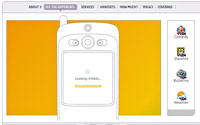 Designed to boost usage of data services, 3 also hopes that the cash-back scheme will prove attractive to new punters and tempt customers from other networks to switch.
Designed to boost usage of data services, 3 also hopes that the cash-back scheme will prove attractive to new punters and tempt customers from other networks to switch. The WePay top-ups come as all-cash vouchers available in £10, £15 and £20 denominations, with no expiry date. However, the WePay cash credits are only valid for 30 days.
The WePay top-ups come as all-cash vouchers available in £10, £15 and £20 denominations, with no expiry date. However, the WePay cash credits are only valid for 30 days. It’s been a long time coming, but Dutch enormo-corp Philips are looking set to finally roll out their innovative Wi-Fi-enabled VoIP telephone, the VP-5500.
It’s been a long time coming, but Dutch enormo-corp Philips are looking set to finally roll out their innovative Wi-Fi-enabled VoIP telephone, the VP-5500.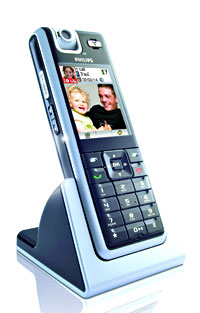 Announced way back in Sept 2005, the VoIP phone comes with a VGA camera that rotates up to 240 degrees, letting users check out their look on the built-in, high-resolution LCD display before committing a potential videocall fashion catastrophe.
Announced way back in Sept 2005, the VoIP phone comes with a VGA camera that rotates up to 240 degrees, letting users check out their look on the built-in, high-resolution LCD display before committing a potential videocall fashion catastrophe.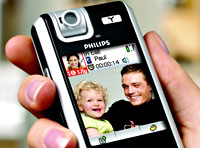 Built around established standards-based technologies like Wi-Fi and Linux, the VP5500 can be upgraded wirelessly, opening the door to future upgrades – giving operators the chance to add value-added services as the becmoe available.
Built around established standards-based technologies like Wi-Fi and Linux, the VP5500 can be upgraded wirelessly, opening the door to future upgrades – giving operators the chance to add value-added services as the becmoe available. To be honest, we’re still a little unsure about video calling.
To be honest, we’re still a little unsure about video calling. A few years ago, you’d be greeted with a blank face or a call to the local psychiatry service if you started going on about ‘listening to your downloaded podcasts’, but figures released from the BBC show how the format is continuing to grow in popularity.
A few years ago, you’d be greeted with a blank face or a call to the local psychiatry service if you started going on about ‘listening to your downloaded podcasts’, but figures released from the BBC show how the format is continuing to grow in popularity. The chart also revealed that nearly two million downloads took place during the BBC podcasting trials over December.
The chart also revealed that nearly two million downloads took place during the BBC podcasting trials over December.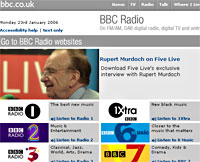 Simon Nelson, controller of BBC Radio & Music Interactive was enthusiastic: “It’s fantastic to see how the demand for radio downloads has grown since we first offered them in 2004. These figures underline the enduring relevance of radio in the digital world.”
Simon Nelson, controller of BBC Radio & Music Interactive was enthusiastic: “It’s fantastic to see how the demand for radio downloads has grown since we first offered them in 2004. These figures underline the enduring relevance of radio in the digital world.” According to an online survey conducted by brand-meisters Brandchannel.com, Google has held on to its title as the world’s most influential brand in 2005, pushing Apple out of the numero uno spot for the second time this decade.
According to an online survey conducted by brand-meisters Brandchannel.com, Google has held on to its title as the world’s most influential brand in 2005, pushing Apple out of the numero uno spot for the second time this decade.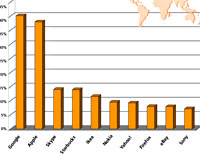 Globally, top honours went to Google, who outflanked brand rivals Apple with an avalanche of punter-pleasing freebies like Google Mini, Desktop and Google Earth, described by Brandreport as, “arguably the greatest thing to hit the Internet since porn” (steady on, chaps!).
Globally, top honours went to Google, who outflanked brand rivals Apple with an avalanche of punter-pleasing freebies like Google Mini, Desktop and Google Earth, described by Brandreport as, “arguably the greatest thing to hit the Internet since porn” (steady on, chaps!). Although Google whipped Apple globally, the company still rules the roost on their home turf, with Steve Jobs’ outfit being declared the leading brand in North America in front of their rivals.
Although Google whipped Apple globally, the company still rules the roost on their home turf, with Steve Jobs’ outfit being declared the leading brand in North America in front of their rivals. It’s a story of booze and beer in the central & Latin America segment, with Corona and Bacardi sitting proud in first and second places respectively.
It’s a story of booze and beer in the central & Latin America segment, with Corona and Bacardi sitting proud in first and second places respectively.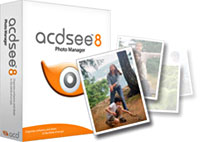 A heady mix of ever plummeting digicam prices, larger memory card capacities and more capacious hard drives means that it’s easy to end up with photos and videos scattered to the four corners of your PC, making it nigh on impossible to find your pictures.
A heady mix of ever plummeting digicam prices, larger memory card capacities and more capacious hard drives means that it’s easy to end up with photos and videos scattered to the four corners of your PC, making it nigh on impossible to find your pictures. A start-up screen gives new users an overview of features to help them get started while upgraders will be glad to see the program sticking to the tried and trusted three-paned interface, coupled with a useful ‘image basket’ function.
A start-up screen gives new users an overview of features to help them get started while upgraders will be glad to see the program sticking to the tried and trusted three-paned interface, coupled with a useful ‘image basket’ function. Unlike many other image management programs, you don’t have to ‘import’ images into the program before they can be viewed, so the program also doubles up as an excellent image file browser.
Unlike many other image management programs, you don’t have to ‘import’ images into the program before they can be viewed, so the program also doubles up as an excellent image file browser. At times, the sheer weight of features can prove a little overwhelming to new users, but for keen photographers keen to keep a vice-like grip on their growing photo collections and looking for a strong, all-round image management solution, we strongly recommend ACDSee.
At times, the sheer weight of features can prove a little overwhelming to new users, but for keen photographers keen to keep a vice-like grip on their growing photo collections and looking for a strong, all-round image management solution, we strongly recommend ACDSee.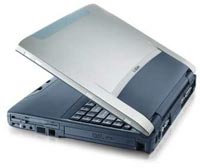 Wi-Fi usage has still a long way to go before it really catches on in the UK according to a new survey carried out by Toshiba.
Wi-Fi usage has still a long way to go before it really catches on in the UK according to a new survey carried out by Toshiba. These figures seem in stark contrast to our recent
These figures seem in stark contrast to our recent  Not surprisingly, a fear of someone swiping their laptop played a big part in people’s reluctance to whip out the Wi-Fi (25%) as did privacy fears (27%).
Not surprisingly, a fear of someone swiping their laptop played a big part in people’s reluctance to whip out the Wi-Fi (25%) as did privacy fears (27%). With a high-end feature set offering auto, scene, aperture and shutter priority modes plus full manual exposure controls, Panasonic’s beautifully sculpted 8 megapixel LX1 is clearly aimed at the discerning photographer who knows their ISO from their f-stop.
With a high-end feature set offering auto, scene, aperture and shutter priority modes plus full manual exposure controls, Panasonic’s beautifully sculpted 8 megapixel LX1 is clearly aimed at the discerning photographer who knows their ISO from their f-stop.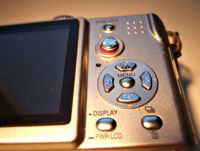 On most compact digcams, exposure adjustments are invariably achieved by fiddly excursions through endless sub-menus, but the LX1’s design affords fast, direct access to a host of vital functions like ISO rating, shutter speed, aperture and file size/quality – essential for those looking to capture the ‘decisive moment’.
On most compact digcams, exposure adjustments are invariably achieved by fiddly excursions through endless sub-menus, but the LX1’s design affords fast, direct access to a host of vital functions like ISO rating, shutter speed, aperture and file size/quality – essential for those looking to capture the ‘decisive moment’. Although some cameras mimic a 16:9 shooting ratio by cropping off the top and bottom of the picture, the LX1 has a true 16:9 sensor, with users able to switch formats via a handy switch on the lens barrel (no sub-menu burrowing needed).
Although some cameras mimic a 16:9 shooting ratio by cropping off the top and bottom of the picture, the LX1 has a true 16:9 sensor, with users able to switch formats via a handy switch on the lens barrel (no sub-menu burrowing needed). Camera controls
Camera controls Photographic modes
Photographic modes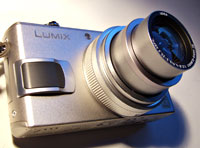 Of course, the capable image stabilisation goes some way to compensate for these serious shortcomings, allowing handheld longer exposures at low ISO ratings, but that’s going to be a dead loss if you’re trying to freeze action in low light.
Of course, the capable image stabilisation goes some way to compensate for these serious shortcomings, allowing handheld longer exposures at low ISO ratings, but that’s going to be a dead loss if you’re trying to freeze action in low light. Conclusion
Conclusion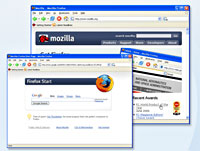 According to figures released by French Web metrics firm XiTi, the open source Mozilla Firefox browser has now grabbed a massive 20% average market share in Europe, creating a growing challenge to the current leader, Microsoft Internet Explorer.
According to figures released by French Web metrics firm XiTi, the open source Mozilla Firefox browser has now grabbed a massive 20% average market share in Europe, creating a growing challenge to the current leader, Microsoft Internet Explorer. Over here in Blighty, it seems that the Brits are yet to be wooed by the might of Mozilla, with the country recording one of the lowest proportions of Firefox users in Europe – just 11%.
Over here in Blighty, it seems that the Brits are yet to be wooed by the might of Mozilla, with the country recording one of the lowest proportions of Firefox users in Europe – just 11%.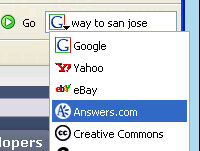 Other Web metrics companies have produced somewhat less spectacular estimates of Firefox’s market share, with OneStat.com reporting in November last year that the browser had notched up a global market share of 11.5%.
Other Web metrics companies have produced somewhat less spectacular estimates of Firefox’s market share, with OneStat.com reporting in November last year that the browser had notched up a global market share of 11.5%.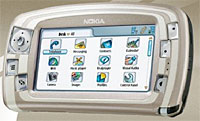 Two recent studies into mobile TV on 3G mobile phones have managed to produce rather inconclusive results concerning the willingness of the great British public to use the service and how much they’d be prepared to pay for it.
Two recent studies into mobile TV on 3G mobile phones have managed to produce rather inconclusive results concerning the willingness of the great British public to use the service and how much they’d be prepared to pay for it.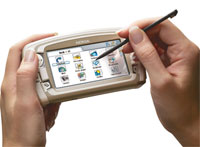 The feedback seemed back-slappingly reassuring, with 83 per cent of the triallists “satisfied” with the service, and 76 per cent indicating they’d be keen to take up the service within 12 months.
The feedback seemed back-slappingly reassuring, with 83 per cent of the triallists “satisfied” with the service, and 76 per cent indicating they’d be keen to take up the service within 12 months.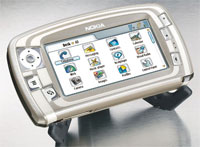 “This trial is further illustration that we are moving from a verbal only to a verbal and visual world in mobile communications,” said David Williams, O2’s technology chief.
“This trial is further illustration that we are moving from a verbal only to a verbal and visual world in mobile communications,” said David Williams, O2’s technology chief.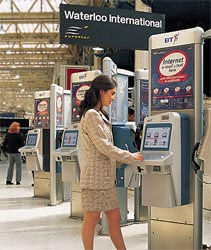 BT has cut short its ambitious plans to transform phone boxes into interactive Internet gateways.
BT has cut short its ambitious plans to transform phone boxes into interactive Internet gateways.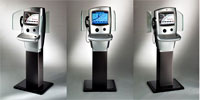 In a public statement BT said, “There are no immediate plans to reduce the base of public multimedia kiosks other than moving to locations with better revenue earning potential and agreeing moves with our managed site owners.”
In a public statement BT said, “There are no immediate plans to reduce the base of public multimedia kiosks other than moving to locations with better revenue earning potential and agreeing moves with our managed site owners.” With the continuing exponential growth in Internet-enabled mobile phones and Wi-Fi, we wouldn’t be surprised if we see some of these all-singing phone terminals disappearing sooner rather than later.
With the continuing exponential growth in Internet-enabled mobile phones and Wi-Fi, we wouldn’t be surprised if we see some of these all-singing phone terminals disappearing sooner rather than later.